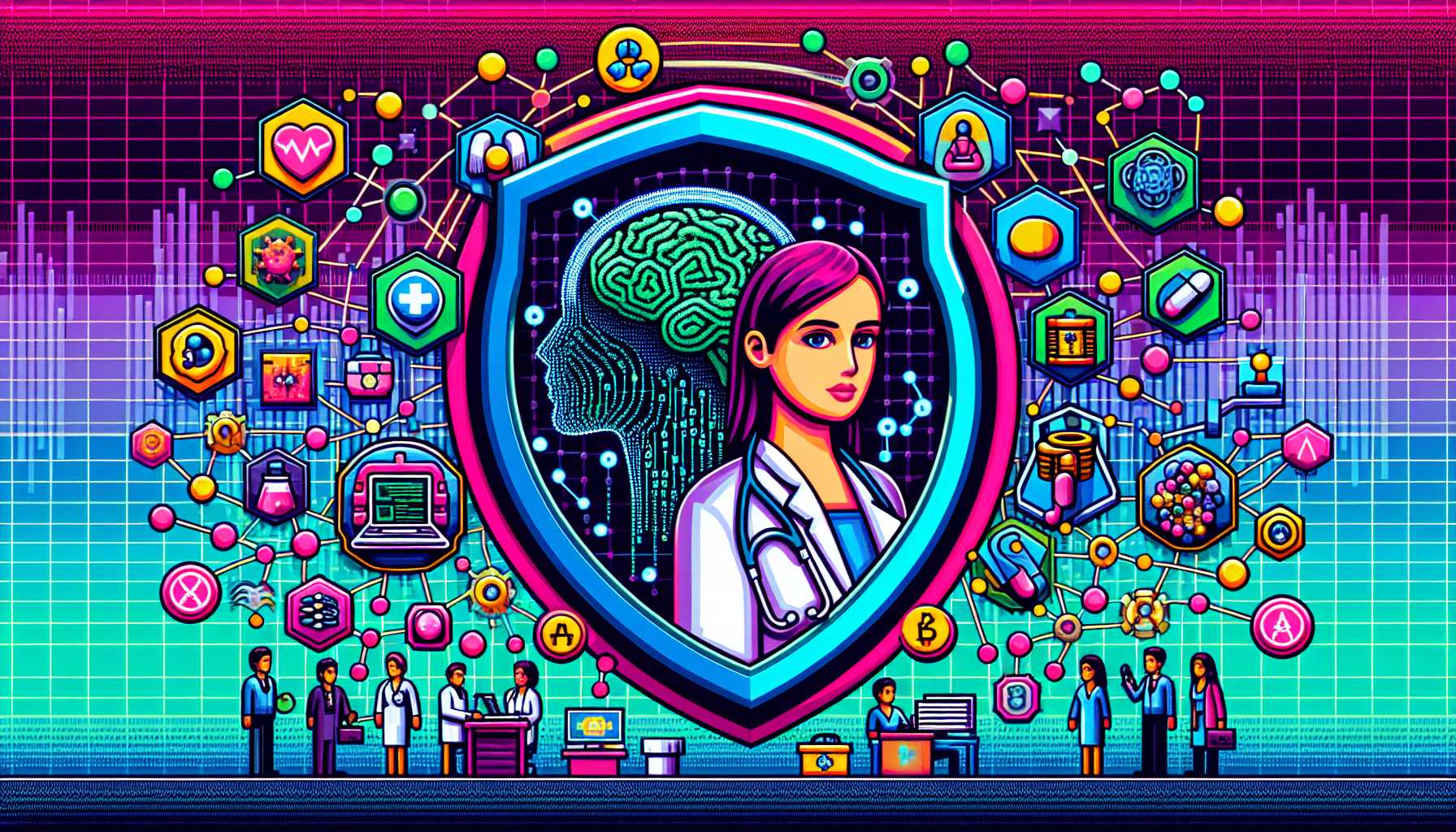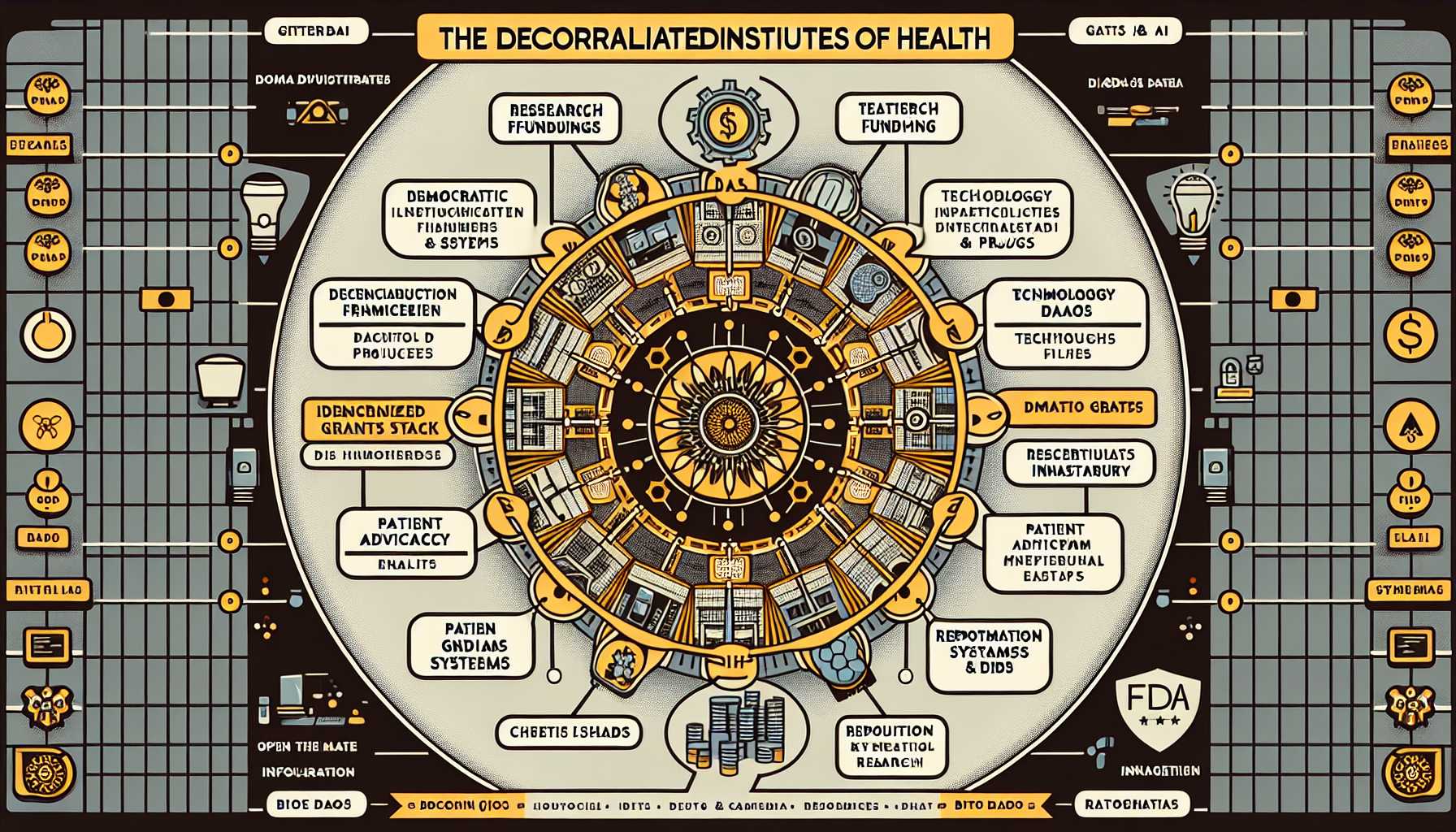🏥 Decentralized Institutes of Health

The Problem: The NIH is a Disease
The National Institutes of Health (NIH) is a $47 billion machine designed to prevent medical progress. It employs two administrators for every one scientist—like having two managers for every McDonald’s fry cook, except the fries cure cancer and the managers prevent them from being made. It rewards grant writing, not research. It forces scientists to spend months writing 100-page proposals that include their blood type, only to be rejected because the NIH’s funding formula was apparently written by a drunk wizard in 1953.
By the time a good idea gets funded, the lead scientist is dead or the disease has evolved thumbs.
Bureaucracy is a disease. The DIH is the cure.
How to Build a Medical Research System That Works
You don’t fix the NIH; you replace it. The Decentralized Institutes of Health (DIH) is what you build when you want to cure diseases instead of writing papers about them. You build it on four principles that invert the logic of bureaucracy.
1. Make Patient Choice Sovereign.
You stop letting committees guess what might work and instead route funding through the people who are actually sick. The NIH has 200 bureaucrats in a room trying to predict the future; the DIH has millions of patients and their doctors making choices about their own lives. The treasury gives subsidies directly to patients, who fund trials with their feet. The trials that attract patients get money. The ones that don’t, die. You have just replaced a grant-writing contest with a market driven by patient need.
2. Pay for Cures, Not Paperwork.
You eliminate grant applications entirely. Researchers get paid in two ways: by patients who join their trials, and by massive bounties for solving clearly defined problems (e.g., “$1B to reverse aging by 10 years, provided it doesn’t turn people into vampires”). You align their incentives with patient outcomes, not bureaucratic process. They get rich by curing diseases, not by writing fiction.
3. Run It With Code, Not Committees.
You build the DIH on transparent, auditable smart contracts because code can’t take bribes. You delete the CEO position entirely—nobody to corrupt means nobody gets corrupted. Every rule is code. Every dollar is tracked on a public ledger like a financial colonoscopy for the world to watch. This isn’t about trusting people to be good (they won’t be); it’s about designing a system where being bad is mathematically impossible. You replace bureaucrats with software, and the primary job of any remaining administrator is to code themselves out of a job—like building your own executioner.
4. Make All Knowledge Public.
You mandate that every trial, every result (positive or negative), and every dataset is published for the world to see. This stops scientists from wasting decades on redundant research and allows knowledge to compound. AI agents can then scan the global data stream to connect researchers, find patterns, and accelerate discovery for everyone.

How You Fund It: The 3-Step Flow
You Fill the Treasury. You use The 1% Treaty to redirect a rounding error from global military spending—$27 billion—into the DIH treasury.
You Let Humanity Set the Rules. A global population of voters uses Wishocracy to set the high-level budget. They don’t pick specific trials. They vote on core allocation rules that govern the entire system, such as:
- Patient Subsidies (~70%): The bulk of the funds create a market for cures by subsidizing patient participation in dFDA trials.
- VICTORY Bond Returns (10%): A fixed portion of all inflows is automatically routed to repay the investors who funded the treaty’s passage. This is the financial engine that makes the revolution possible. See The Investment Vehicle.
- Research Prizes & Bounties (~5-10%): Funds moonshot projects and public goods that a pure patient-driven market might overlook.
- Operations & Expansion (~5-10%): Funds the core infrastructure and campaigns to grow the treaty from 1% to 5% and beyond.
This creates a transparent, dynamic, and capture-proof system for allocating humanity’s health budget.
- You Let Patients Fund Cures. The treasury flows to patients as subsidies. This creates a vibrant, competitive marketplace where the best research attracts funding directly from the people who need it most.
How You Fund the Big Stuff: Emergent Institutes
A marketplace of individual patients is powerful, but it won’t fund the massive projects that benefit everyone. No single patient will use their subsidy to fund a $1 billion prize to reverse aging or a shared data platform for all cancer researchers.
These “public goods” are the difference between curing cancer and arguing about it on Twitter. This is where you introduce emergent institutes.
These aren’t bureaucracies; they are tools for collective investment that arise from the community itself—like the Decentralized Cancer Institute (“For cells that forgot how to die”) or the Decentralized Institute of Mental Health (“For brains that hate their owners”). When a community directs billions into trials, you give them tools to pool a tiny fraction of that flow. This allows them to collectively post massive prizes and fund shared infrastructure—the kinds of breakthrough projects a pure marketplace would ignore.
This is how you fund not just thousands of individual trials, but the entire ecosystem of innovation.
How You Build the Machine: The Legal and Financial Engine
The DIH is a hybrid system designed to use the tools of capitalism to build a post-capitalist health economy. To do this legally and effectively requires a sophisticated legal architecture involving non-profits, lobbying arms, and a for-profit investment vehicle. For the full breakdown of this structure, see the chapter: The Legal Architecture.
The Result: A Revolution in Medicine
The DIH provides the fuel, and the Decentralized FDA (dFDA) is the engine that uses it to revolutionize medicine. By funding trials through this radically efficient platform, the system achieves a phase change in medical progress. As detailed in the dFDA chapter, this new model is:
- Radically More Efficient: The DIH’s funding, when routed through the dFDA’s decentralized trial model, enables testing on a scale that was previously impossible, dramatically lowering the cost per patient.
- Orders of Magnitude Faster: The dFDA platform cuts through bureaucratic delays, getting treatments to patients in years, not decades.
- 100% Transparent: All data generated from DIH-funded trials is made public, creating a compounding knowledge base for all of humanity.
You replace a system that values paperwork with one that values not dying. This is what happens when you stop asking permission from people who profit from your sickness. Soon, humans will live to 150, and they’ll complain about having to update their passwords for that long.